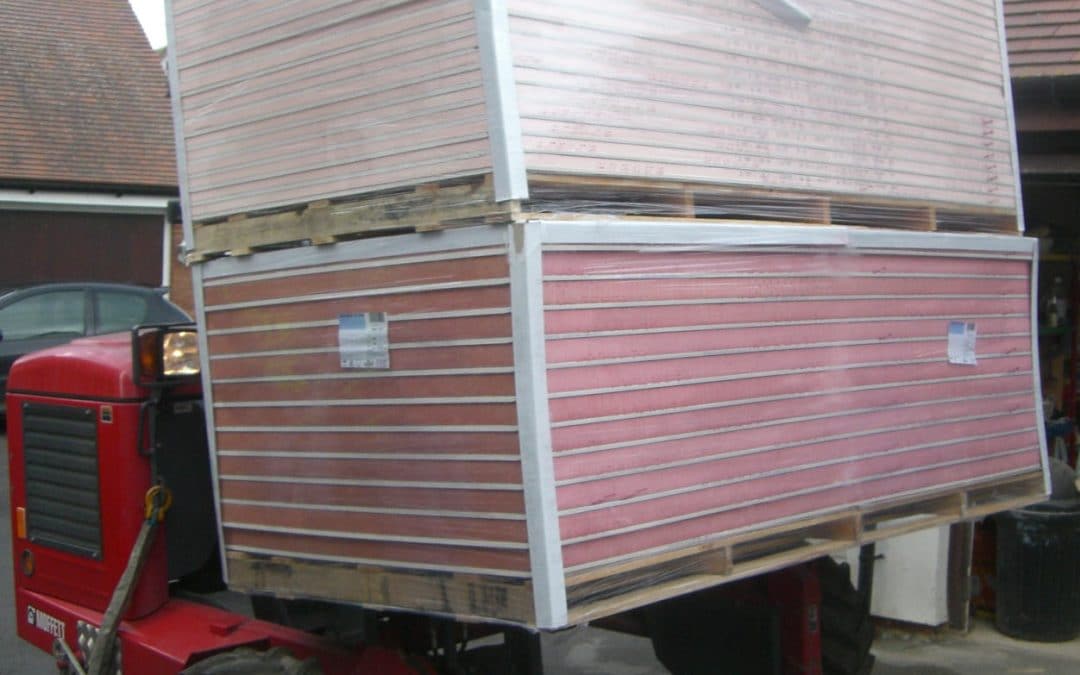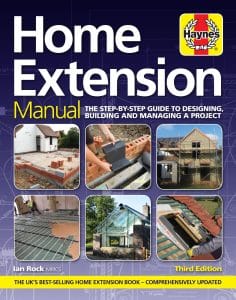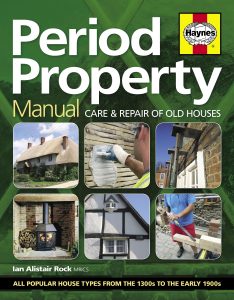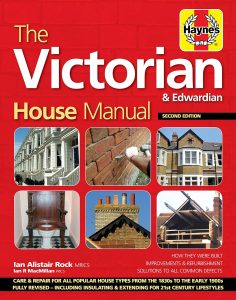In this new series, Chartered Surveyor Ian Rock FRICS – Author of the Haynes Home insulation Manual – explains how to cut your energy bills by boosting your home’s thermal efficiency.
PART TWO: Different Types of Insulation
and
How to treat mouldy walls and ceilings!
Try Googling the word ‘insulation’ and the chances are you’ll be deluged with vast numbers of competing materials all claiming to be the best thing known to man. So how do you tell which is the right choice for your property?
There are a number of factors to consider when selecting insulation. Thermal performance is obviously going to be at a key factor – it’s pretty fundamental that insulation should be highly effective at stopping heat leaking through it. There’s also the question of cost and how widely available it is in to order from DIY stores or builders merchants.
Another important consideration is how easy the stuff is to install – some materials are incredibly itchy and unpleasant to handle. For older properties, materials need to be compatible with the type of construction so they don’t exacerbate damp problems. In some cases you’ll want a product that can ‘multitask’ with effective sound-deadening qualities.
Last but not least there’s the issue of a product’s environmental credentials – no one wants recycled toxic waste lining the walls of their home, no matter how thermally efficient!
Different types of insulation
Probably the simplest way to categorise different materials is by looking at what they’re made from:-
* Foamed plastics
Eg Polyurethane and polystyrene
These are mostly supplied as rigid boards designed for insulating walls, roofs and floors. Polyurethane boards (often referred to by brand names such as ‘Kingspan’ or ‘Cellotex’) offer the best performance of all the mainstream products. These are about twice as effective as polystyrene (e.g. white Styrofoam similar to packaging material) but are also more expensive.
* Mineral based
Eg glass fibre and rock/stone wool.
Best known as mineral quilts used for loft insulation. Some types are now made from recycled glass bottles with a soft texture similar to cotton wool. These are also the most fire resistant types of insulation.
* Natural materials
e.g Sheep’s wool, wood-fibre, hemp, cellulose fibre
Natural materials tend to be a little dearer but are generally much nicer to work with. Not surprisingly they score best in terms of environmental impact. Being ‘breathable’ they suit older buildings with solid walls.
* Reflective foils
‘Multi-foils’ use thin sheets of aluminium, rather like ‘Bacofoil’, which contain multiple layers of tissue-like insulant or ‘bubble wrap’. Also known as ‘radiant heat barriers’ these work primarily by reflecting solar energy. Relatively thin strips of multifoil can insulate as effectively as thicker layers of mineral wool, but need a clear air space either side for optimum performance.
* Hi-tech
Aerogel and vacuum panels
These recently developed ‘space-age’ materials offer extremely high performance, and only need extremely thin layers to match that of the best mainstream materials. Although very expensive, they can be useful in areas where space is limited, such as window reveals.
What’s best?
The right choice of materials depends on where you want to put the insulation, the type of property, and of course the size of your budget. Different materials are sold in different physical forms making them better suited to insulating specific parts of a building:-
Loose materials
These are handy for reaching awkward spots in lofts etc and can be laid by hand or blown-in using special machines. One of the best known is cellulose fibre (recycled newspaper).
Loose tufts of mineral wool or small beads of polystyrene are also widely used as cavity wall insulation.
Fluffy quilt
Soft, fluffy (and sometimes itchy) materials sold in rolls of quilt include mineral wool, glass fibre wool, as well as natural materials such as sheep’s wool and cellulose. Widely used for insulating lofts.
Rigid boards
Mostly made from petrochemicals, such as polyurethane and polystyrene, although some natural materials like woodfibre boards are also available. Ideal for lining solid walls, floors, ceilings and flat roofs.
Semi-rigid batts
Flexible batts sold in handy chunk sizes are a ‘halfway house’ between fluffy quilts and rigid boards. Made from mineral wool, sheepswool and hemp etc, these can be wedged between studwork, joists or rafters.
What can go wrong?
With any kind of home improvement project there’s always the potential for mishaps, and home insulation is no exception –e.g. it’s not entirely unknown for legs to be accidentally thrust through bedroom ceilings! This of course isn’t the only potential risk. One good piece of advice is to avoid breathing in dust and fibres when cutting insulation materials (any major cutting work should be done outdoors, or wearing a mask).
And, as always, sharp blades and power tools have serious potential to maim and wound. But probably the biggest risk from insulating your home is a hidden time-bomb – dampness caused by condensation or moisture trapped in walls.
Condensation
It’s an interesting fact that warm air can hold a considerably more moisture than cold air. A surprising amount of humidity is generated in our homes simply from everyday activities like breathing and cooking as well as from things like plants, pets and drying clothes. So the air in a well-insulated room can actually be surprisingly humid – particularly in steamy bathrooms and kitchens. This isn’t necessarily a problem unless the warm, humid air finds a way to leak through gaps in walls, floors or ceilings etc. Then as soon as it comes into contact with a cold surface it will cool and condense back into water.
Suppose you live in an older property with solid walls, and you decide to insulate them internally by lining the inner surface (facing the room). This has the effect of making the original wall colder because once the insulation’s all in place, the inner face of the wall is no longer exposed to the warmth from the room. As a result, the temperature of the wall will drop so any moist air that hits it is likely to condense.
Damp that forms in this way, deep inside the structure of a property, is known as ‘interstitial condensation’. The danger is that, being out of sight, it can go unnoticed until serious decay has taken hold – for example if it drips down the wall to affect hidden floor timbers.
Mouldy walls and ceilings
Dampness from condensation is also attracted to any areas where insulation is thin or has been omitted. This is down to ‘thermal bridging’ – where cold from outside is able to physically penetrate into the house. So it’s important to make the insulation as continuous as possible without any gaps.
Some parts of a property are notoriously prone to ‘cold spots’ caused by thermal bridging, such as the reveals around window and door openings and sloping upstairs ceilings near the eaves. When moist, warm air encounters these cold surfaces, it will condense into water – eventually attracting an ugly patina of black mould.
But ‘thermal bridging’ is a 2 way process that can similarly can allow warmth to seep out of rooms. For example where the main walls of a room are insulated on their inner face, any junctions where they join internal partition walls can act as a ‘heat sink’. We’ll look at how to solve this problem later when insulating walls internally. Fortunately, this isn’t an issue where cavity walls are insulated, or where they’re clad on the outside.
How to prevent problems
To minimise condensation problems the obvious thing to do is reduce the amount of moist, steamy air that’s generated in the first place (eg by ensuring cloths driers are properly vented to outdoors, and not boiling food). The next best thing is to get rid of it before it has a chance to cause any problems, by fitting extractor fans to kitchens and bathrooms. Even then, there will probably be times when the indoor atmosphere contains high levels of humidity, so you need to insulate with this in mind.
Air-tightness
In most cases, when insulating it’s important to make it physically impossible for any moist air to penetrate the structural fabric from inside the house. This means ensuring that insulated surfaces are fully sealed and vapour-tight by laying vapour control membranes over the insulation on the (warmer) room side. These membranes are basically polythene sheets designed to stop the passage of airborne water vapour.
However when it comes to insulating older buildings with solid walls, this approach may not be appropriate. Here a very different strategy is applied. Instead of blocking all moist air from getting through, it’s accepted that a certain amount may get into the fabric. This is OK as long as it’s free to evaporate out again through ‘breathable’ surfaces – emulating the way old buildings deal with moisture. By using natural insulation materials that work in tune with traditional materials, such as sheep’s wool and wood-fibre boards, the moisture doesn’t get trapped and is free to escape.
Ventilation
Ventilation is important to ensure that the air stays fresh in rooms used for living and sleeping. It’s also key to removing humid air before it can cause trouble. In a typical home, about 0.5 air changes per hour should normally be sufficient. But this needs to be ‘controlled’ ventilation rather than through uncontrolled draughts (see ‘draught-proofing’ in next blog). So even in new homes, which are built to be as airtight as possible, good ventilation is needed to supply fresh air for breathing and to disperse water vapour and cooking smells etc
The Building Regulations stipulate 3 main types of ventilation to achieve a controlled supply of air to the home:-
* Background: this is normally provided by trickle vents – small slots at the heads of window frames and integral to most new replacement windows. Trickle vents can easily be opened or closed as the fancy takes you.
* Purge: known also as ‘rapid’ ventilation, this can be provided simply by opening windows, to allow rapid evacuation of cooking smells, fumes and foul odours.
* Extract: Extractor fans should be fitted in bathrooms and kitchens to remove moist, humid air. Extractor fans and trickle vents in windows work together to draw stale air out of the rooms whilst admitting sufficient fresh air to ventilate the house.
When an old extractor fan needs replacing it can be a good opportunity to fit new low wattage replacements with humidity sensors, or swap them for heat recovery room ventilators.
NEXT MONTH: How to make massive gains in your home’s thermal efficiency for less than the price of a curry!
Ian Rock’s home insulation tips are taken from the new Haynes Home Insulation Manual. For further information see www.home-insulating.com
Check out our Rightsurvey blog pages for more industry tips and secrets written by property professionals to help put you in control.







